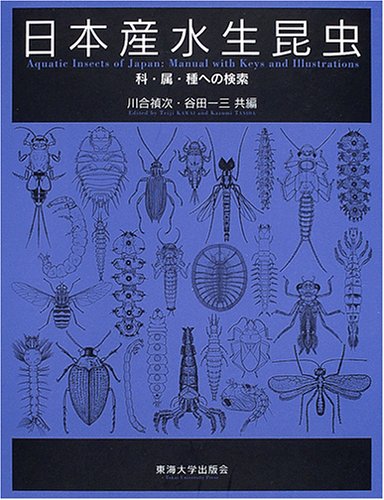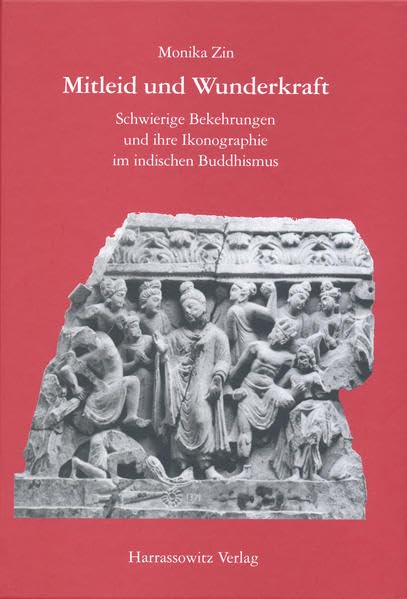1 0 0 0 OA 悲劇から喜劇へ : エウリーピデース『イオーン』のドラマトゥルギー
- 著者
- 木曽 明子
- 出版者
- 京都大学
- 雑誌
- 西洋古典論集 (ISSN:02897113)
- 巻号頁・発行日
- vol.14, pp.1-26, 1996-09-15
この論文は国立情報学研究所の学術雑誌公開支援事業により電子化されました。Euripides the tragedian is often called the inventor of European comedy. Indeed the plays he wrote in the last years of his career, Iphigenia among the Taurians. Helen and Ion, include most of the elements which were to become the stock features of comedies of Menander, Plautus, Shakespeare. Moliere, Oscar Wilde and even Joe Orton of the present day. How can a tragedy be presented as a tragedy but be appreciated as a comedy? I will try to examine the dramatic art of Euripides as shown in Ion, a play which, though an entry in the tragic competition at the festival of Dionysus, shows a treatment of situation and character differing subtly from the tragic norm and introducing a new attitude to human nature and action. The following points will be discussed from the perspective of what is comic (1-14, 16-18) and what is tragic (15) in the play : 1. Hermes' appearance as Prologist in the style of Roman comedy. 2. The introduction of "household matters, things we use and live with, " as phrased by Aristophanes. 3. Parody in the mode of Aristophanic stage. 4. The attitude of watching which causes detachment rather than involvement on the part of the audience. Peace and harmony in mythical prospect. 5. The so-called "Sophoclean irony" in stichomythia utilized to create tragicomic effects. 6. The fall of divine authority-Apollo caricatured. 7. Comic effect through hyponoia. 8. Qui pro quo in the scene of father-and-son recognition. 9. Comic effect through simple gestures on trochaic tetrameter. 10. Xuthus as the prototype of pater iratus and his deception. 11. Topicality treated with satire. 12. Diversion from the main plot in the style of comic parabasis. 13. The significance of paronomasia on Ion as the symbol of the rebirth of Athens. 14. Things contrary to expectation-the archetype of servus dolosus in his role manipulating his mistress. 15. Tragic monody by the heroine, as the centripetal force supporting the dramatic structure. 16. Disjointed structure-contrary to the Aristotelian prescription for successful tragedy. 17. Anagnorisis(discovery) and peripeteia(change of fortune) brought about by accident, not by the neccesity and probability of action. 18. The play as a ritual in celebration of the rebirth of Athens, with Athena ex machina to honour the occasion.
1 0 0 0 OA デモステネスの雄弁----ディオニュシオスの耳
- 著者
- 木曽 明子
- 出版者
- 京都大学
- 雑誌
- 西洋古典論集 (ISSN:02897113)
- 巻号頁・発行日
- vol.18, pp.1-17, 2002-10-30
この論文は国立情報学研究所の学術雑誌公開支援事業により電子化されました。Demosthenes (384-322 B. C.) has kept the unchallenged name as first and foremost of the ancient Greek orators, which means that his speeches well deserve attention not only as delivered "live" to the citizens of the democratic Athens of the fourth century B. C., but also as literary works which stand up to various demands of artistic criticism of different ages and cultures. Among the ancient critics who appreciated Demosthenes' speech was Dionysius of Halicarnassus, who arrived at Rome around 30 B. C. to become a tutor of declamation. Declamation at that time not only constituted part of the educational program for the youth of the upper class Romans but also was very popular as a sort of entertainment in which the performances of professional declamators attracted the audience just as the recitals of popular singers did. In such circumstances Dionysius who used the speeches of Greek orators as model material in his tutorial of declamation was in a favorable position to discover one of the keys to the miraculous power of Demosthenes' speech---euphony. Dionysius examined how his sentences were composed and found that the word arrangement in the composition was the secret of the phonetical beauty and charm of Demosthenes' speech. The orator proved to be the best exploiter of the linguistic characteristics of Greek language which allows considerable license in word order without contravening grammar. The orator could provide euphony in his speech as in poetry without losing clarity of speech which is the vital prerequisite in persuasion.
- 著者
- 荒川 宜親
- 出版者
- 日本臨床微生物学会
- 雑誌
- 日本臨床微生物学雑誌 = The journal of the Japanese Society for Clinical Microbiology (ISSN:09175059)
- 巻号頁・発行日
- vol.13, no.3, pp.150-161, 2003-11-28
- 被引用文献数
- 9 12
1 0 0 0 シエイクスピアの定冠詞
- 著者
- フランツ W 楼井 忠一 サクライ チュウイチ Sakurai Chuichi
- 出版者
- 同志社大学人文学会
- 雑誌
- 人文學 (ISSN:04477340)
- 巻号頁・発行日
- no.8, pp.40-57, 1952-12-15
1 0 0 0 Ben JonsonのMasqueについての管見
- 著者
- 桜井 忠一 サクライ チュウイチ Sakurai Chuichi
- 出版者
- 同志社大学人文学会
- 雑誌
- 人文學 (ISSN:04477340)
- 巻号頁・発行日
- no.48, pp.89-113, 1960-07-31
1 0 0 0 IR ドイツカメラリスムスと経済学
- 著者
- 阿部 弘 アベ ヒロシ Abe Hiroshi
- 出版者
- 駒澤大学経済学会
- 雑誌
- 駒沢大学経済学論集 (ISSN:03899853)
- 巻号頁・発行日
- vol.44, no.1, pp.37-67, 2012-09
1 0 0 0 OA <論説>組閣の原理と手続 : 組閣と倒閣の整合性・再考
- 著者
- 近藤 敦
- 出版者
- 九州産業大学
- 雑誌
- エコノミクス : ekonomikusu (ISSN:13424572)
- 巻号頁・発行日
- pp.167-193, 1996-11-30
1 0 0 0 OA イタリア王国~イタリア共和国における宗教史学
- 著者
- 江川 純一
- 出版者
- 東京大学文学部宗教学研究室
- 雑誌
- 東京大学宗教学年報 (ISSN:02896400)
- 巻号頁・発行日
- vol.30, no.特別号, pp.179-194, 2013-03
2010~2012年度文部科学省科学研究費補助金基盤研究 (B) 「宗教概念ならびに宗教研究の普遍性と地域性の相関・相克に関する総合的研究」 (研究代表者 : 池澤優) 課題番号 : 22320016 報告書
- 著者
- 石垣 久美子 山本 哲也 青木 ゆりあ 嶋田 洋徳
- 出版者
- 一般社団法人日本認知・行動療法学会
- 雑誌
- 日本行動療法学会大会発表論文集
- 巻号頁・発行日
- no.35, pp.410-411, 2009-10-11
1 0 0 0 日本産水生昆虫 : 科・属・種への検索
- 著者
- 川合禎次 谷田一三共編
- 出版者
- 東海大学出版会
- 巻号頁・発行日
- 2005
1 0 0 0 OA 老化をめぐる二, 三の問題
- 著者
- 山形 敞一
- 出版者
- 一般社団法人 日本老年医学会
- 雑誌
- 日本老年医学会雑誌 (ISSN:03009173)
- 巻号頁・発行日
- vol.21, no.3, pp.183-190, 1984-05-30 (Released:2009-11-24)
- 参考文献数
- 12
1970年から1979年までの厚生省発表のによる全死亡数6,982,264名の年齢別死亡率によると, 胃癌では55~59歳, 胃潰瘍では75~79歳, 十二指腸潰瘍では35~39歳が最高である. また1970年から, 1979年までの日本病理剖検輯報の剖検数257,868名の年齢別死亡率によると, 胃癌では70~74歳, 胃潰瘍では65~69歳, 十二指腸潰瘍では25~29歳が最高である.次にわれわれが宮城県で実施している胃集団検診成績のうち1961年, 1966年, 1971年, 1976年, 1981年の受検者総数407, 695名の年齢別頻度によると, 胃癌では70歳, 胃潰瘍では65~69歳, 十二指腸潰瘍では29歳以下が最高である. すなわち, これらの成績は胃癌と胃潰瘍が典型的な老人病であることを示している.人間の生命維持に最も重要な機能の1つは消化吸収で, これに関与するのは胃液と膵液の分泌機能である.われわれは内視鏡的胃粘膜正常者245名について胃液分泌能を測定したところ, 胃液分泌量, 最高酸濃度, 最高ペプシン濃度はいづれも70歳を過ぎると減少する傾向を認めた. 次に膵疾患を除外された507名について膵液分泌能を測定したところ, 膵液分泌量, 重炭酸分泌量, アミラーゼ分泌量はいづれも加齢によっては減少しない. それで健康者の脂肪吸収試験を行ったところ, 脂肪1日摂取量が30g以下では加齢による脂肪吸収の滅退はみられないが, 脂肪1日摂取量が35~40gになると, 70歳以上では滅退する傾向を認めた. したがって, 健康な老人では食餌量が適量であれば加齢による消化吸収の障害はみられない.最近日本人の平均寿命が伸びて世界1の長寿国となったが, 文献によると, 日本人は従来から長寿だったようである. 古代中国の史官陳寿 (233~277) の記した「魏志倭人伝」によると, 3世紀の日本人の寿命は百歳であった. また江戸時代の医学者貝原益軒 (1630-1714) の著わした「養生訓」(1713), 香月牛山 (1656-1740) の著わした「万民必用長命養生訓」(1716) でも, 日本人の寿命は百歳と記されている.ドイツの医学者 Christoph Wilhelm Hufeland (1762-1836) はその著書のなかで天寿二百歳説を提唱したが, これを現代日本人にあてはめると天寿120歳となる. また, 約140億の脳細胞が全部死滅するのは190歳と算出されているから, その過半数が残存する120歳位を天寿としてよいと考えている.われわれは, 今後天寿120歳を目ざして研究をすすめるべきであると考える.
1 0 0 0 高等学校第1分科会 現行教育課程 : III. 高等学校部会
1 0 0 0 沖縄の図書館・図書館学事情 : 基地問題との関わりから
1 0 0 0 OA 要旨
- 出版者
- 国立国会図書館
- 雑誌
- 外国の立法 : 立法情報・翻訳・解説 (ISSN:13492071)
- 巻号頁・発行日
- no.263, 2015-03
- 著者
- 野呂 香
- 出版者
- 昭和音楽大学
- 雑誌
- 研究紀要 (ISSN:09138390)
- 巻号頁・発行日
- vol.29, pp.105-115, 2010-03-15
1 0 0 0 OA 小学生にプログラミングを教える
- 著者
- 室谷 心
- 出版者
- 学校法人松商学園松本大学
- 雑誌
- 松本大学研究紀要 = The Journal of Matsumoto University (ISSN:13480618)
- 巻号頁・発行日
- vol.11, pp.269-281, 2013-01-31
まつもと広域ものづくりフェアで実施した、松本大学キッズプログラミング教室での、小学生を対象としたプログラミング教室の教育実践を報告する。
- 著者
- 天野 武弘
- 出版者
- 一般社団法人日本機械学会
- 雑誌
- 日本機械学會誌 (ISSN:00214728)
- 巻号頁・発行日
- vol.109, no.1056, pp.899-902, 2006-11-05
- 被引用文献数
- 1
1 0 0 0 Mitleid und Wunderkraft : schwierige Bekehrungen und ihre Ikonographie im indischen Buddhismus
- 著者
- Monika Zin
- 出版者
- Harrassowitz
- 巻号頁・発行日
- 2006





